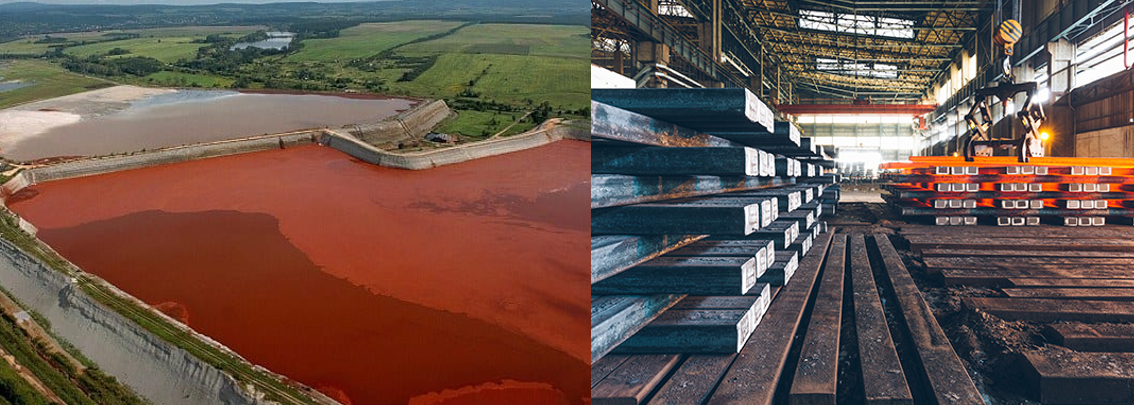

The extensive stockpiles of hazardous red mud generated during alumina refining could be repurposed to produce green steel.

Globally, approximately 4 billion tonnes of red mud are currently stored, posing an environmental risk and the potential for fatal accidents. The production of one tonne of steel results in nearly 2 tonnes of CO2 emission. This is primarily due to the conventional steelmaking process, which mainly relies on burning fossil fuels to react carbon with oxygen in iron ore, yielding both iron and carbon dioxide.
Dr Isnaldi Souza Filho and his team at the Max Planck Institute for Iron Research in Germany have developed an innovative solution to address the challenges associated with red mud. Their method involves extracting iron from red mud by subjecting it to hydrogen and argon plasma and subsequently utilising the extracted iron to manufacture steel.
A critical aspect of the process lies in the fact that red mud contains a significant percentage of iron oxide, ranging from 30 to 60 per cent by weight, along with potentially hazardous elements like arsenic and lead.
In their approach, the researchers employed an electric arc furnace to heat the red mud to a temperature of approximately 1850°C (3362°F), using a combination of argon and hydrogen to react with the oxygen present. The resulting molten substance was then cooled, crushed, and separated into iron pellets, poised for steel production.
Dr Matic Jovičević-Klug, a co-author affiliated with the Max Planck Institute for Iron Research, suggests that utilizing the abundant red mud could potentially yield a substantial amount of steel, ranging from 748 million to 942 million tonnes. This innovative process could reduce over a billion tonnes of CO2 emissions compared to conventional steel production methods. Despite these promising figures, it's important to note that this scale would represent only a small fraction of the total global steel production each year.
According to Mark Jacobson from Stanford University in California, utilising green hydrogen in the refining process is a concept that has been introduced previously. In 2021, a Swedish consortium named HYBRIT conducted a trial that significantly reduced the carbon footprint of steelmaking by as much as 98 per cent. What distinguishes the latest approach is the use of the potentially hazardous red mud as a feedstock, adds Jacobson.
"Whether it is less expensive than the first process is difficult to tell. The authors claim it is inexpensive, but more information is needed to determine this", says Jacobson.



Responses






